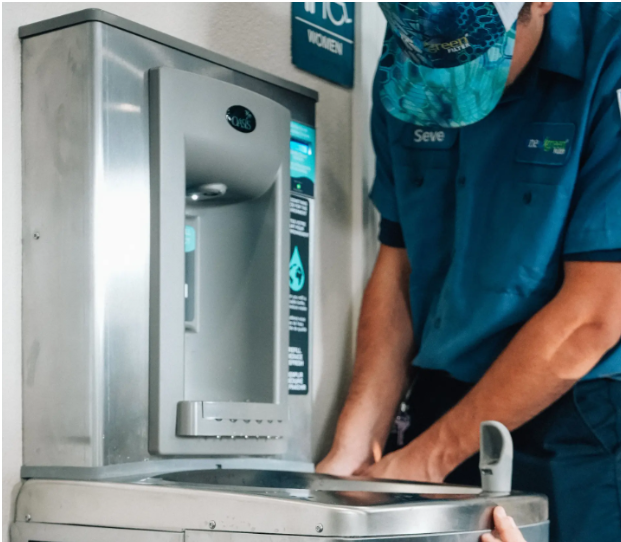
Access to safe, clean drinking water is essential in public spaces, schools, parks, and offices. A water fountain filter system plays a crucial role in ensuring that the water dispensed is not only refreshing but also free from harmful contaminants. With rising concerns about water quality, these systems have become indispensable for promoting health, sustainability, and convenience.
In this guide, we provide a comprehensive look at how water fountain filter systems work, their benefits, installation requirements, and key factors to consider when choosing the best system for your environment.
What Is a Water Fountain Filter System?
A water fountain filter system is a specialized filtration unit designed to purify tap water before it is dispensed from drinking fountains. These filters eliminate impurities, sediment, chlorine, heavy metals, and bacteria, ensuring the water tastes better and is safe for consumption.
A common question people ask is: are water fountains filtered? The answer depends on the specific installation. While some fountains are directly connected to tap lines without filtration, modern water fountain filter systems ensure the water is thoroughly purified before reaching the user. This makes them highly reliable for delivering clean, refreshing hydration in any setting.
Why Do You Need a Water Fountain Filter System?
Without proper filtration, drinking fountains may dispense water that contains contaminants. Pollutants like chlorine, lead, pesticides, and bacteria can affect both taste and safety. Installing a water fountain filter system offers multiple advantages:
- Improved Taste and Odor – Filtered water is free from unpleasant chlorine taste and metallic aftertaste.
- Health Protection – Reduces harmful contaminants such as lead, bacteria, and VOCs (volatile organic compounds).
- Environmental Impact – Encourages the use of reusable bottles and reduces single-use plastic waste.
- Cost Savings – Provides safe water at a fraction of the cost of bottled water.
How Does a Water Fountain Filter System Work?
The filtration process is multi-layered to ensure maximum purification:
- Pre-Filtration (Sediment Removal)
Removes larger particles such as dirt, rust, and sand that may damage the system. - Activated Carbon Filtration
Adsorbs chlorine, pesticides, herbicides, and organic contaminants, improving taste and smell. - Microfiltration or Reverse Osmosis (Optional)
Targets smaller impurities such as heavy metals and pathogens. - Post-Filtration and UV Sterilization (Advanced Models)
Neutralizes bacteria, viruses, and other harmful microorganisms, delivering the purest drinking water possible.
Benefits of Installing a Water Fountain Filter System
Installing a drinking fountain filter system offers more than just clean water. It provides long-term benefits for organizations and communities:
1. Promotes Public Health
Filtered water reduces exposure to harmful substances, protecting children, employees, and visitors from potential health risks.
2. Encourages Hydration
People are more likely to drink water when it is fresh, clear, and great-tasting, promoting wellness and productivity.
3. Supports Sustainability
By reducing reliance on bottled water, organizations help minimize plastic waste and carbon footprint.
4. Cost-Effective Solution
A one-time investment in a filter system saves money over time compared to continuous bottled water purchases.
Where Are Water Fountain Filter Systems Commonly Used?
These systems are widely installed in:
- Schools and Universities – Ensuring students have access to safe hydration throughout the day.
- Offices and Workplaces – Promoting employee wellness and reducing bottled water costs.
- Public Parks and Recreation Centers – Encouraging hydration during physical activities.
- Hospitals and Healthcare Facilities – Providing safe water for patients and staff.
- Airports and Transit Stations – Catering to thousands of travelers daily.
How to Choose the Right Water Fountain Filter System
When selecting a system, consider the following factors:
- Water Quality in Your Area – Test local water for contaminants to identify the right filtration method.
- Filtration Capacity – Choose a filter that can handle the volume of users in your facility.
- Maintenance Requirements – Look for systems that are easy to service and have readily available replacement filters.
- Certifications and Standards – Ensure the system meets safety and water quality standards.
- Installation Space – Evaluate the space available for installing under-sink or built-in filter systems.
Maintenance of Water Fountain Filter Systems
Regular maintenance ensures consistent water quality and extends the life of your system. Key steps include:
- Replacing Filters on Time – Most filters require replacement every 6–12 months depending on usage.
- Cleaning the Fountain – Regular cleaning prevents the buildup of bacteria and limescale.
- Inspecting Connections and Seals – Prevents leaks and maintains proper water flow.
- Annual Professional Servicing – Ensures optimal performance and safety.
Final Thoughts
A water fountain filter system is more than just an accessory; it is a necessity for modern facilities that prioritize health, convenience, and sustainability. By investing in the right filtration system, you provide a continuous source of safe, great-tasting water while promoting wellness and reducing environmental impact.
At One Green Filter, we are dedicated to delivering high-quality filtration solutions that ensure your drinking water is always pure, safe, and refreshing.
